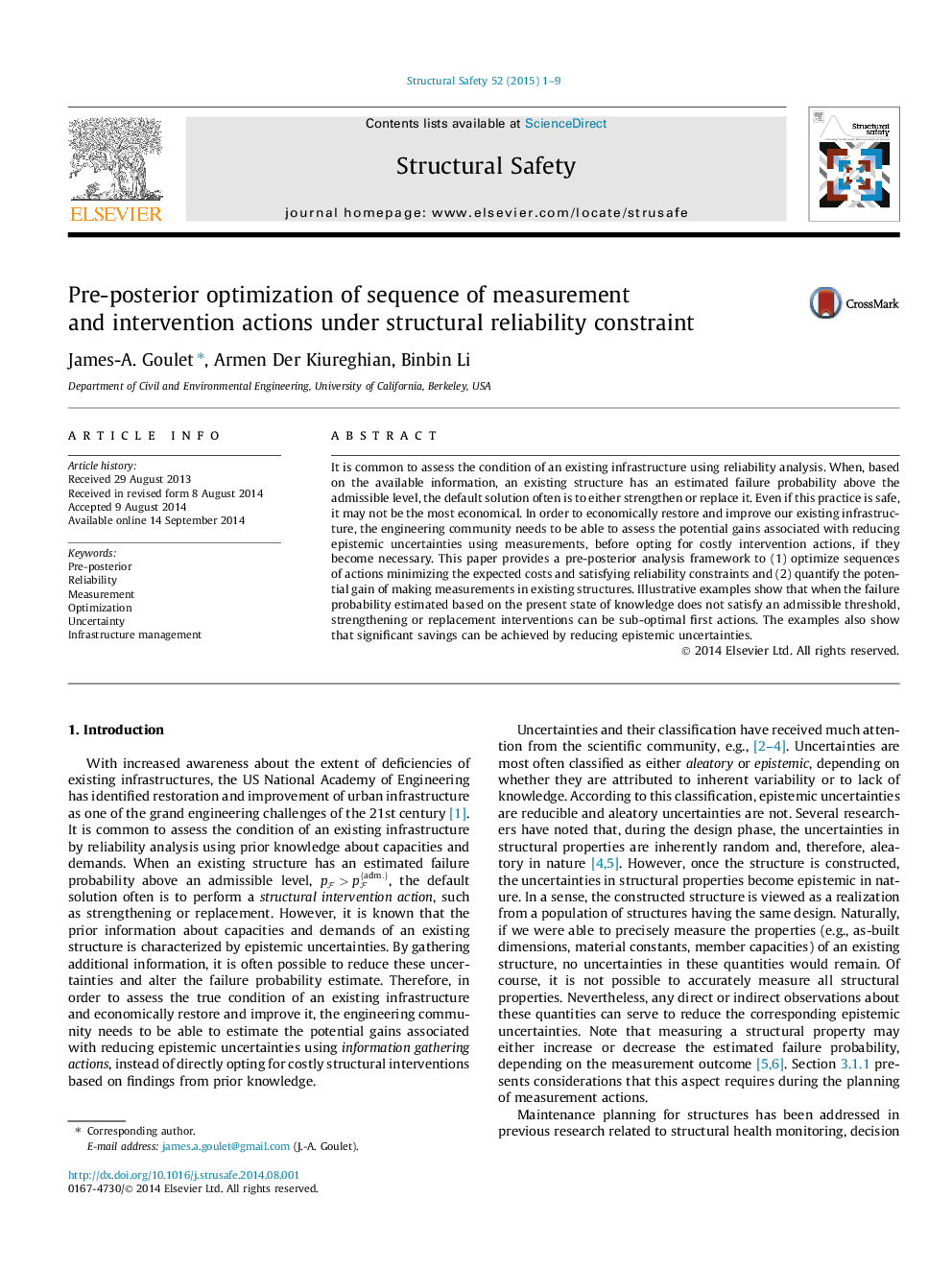| Article ID | Journal | Published Year | Pages | File Type |
|---|---|---|---|---|
| 307513 | Structural Safety | 2015 | 9 Pages |
•We develop a pre-posterior framework for assessing the potential gain of measurements.•We optimize sequences of actions for costs and reliability constraints.•We quantify the potential gain of making measurements in existing structures.•The methodology is applied to two illustrative examples.•Examples show that savings can be achieved by reducing epistemic uncertainties.
It is common to assess the condition of an existing infrastructure using reliability analysis. When, based on the available information, an existing structure has an estimated failure probability above the admissible level, the default solution often is to either strengthen or replace it. Even if this practice is safe, it may not be the most economical. In order to economically restore and improve our existing infrastructure, the engineering community needs to be able to assess the potential gains associated with reducing epistemic uncertainties using measurements, before opting for costly intervention actions, if they become necessary. This paper provides a pre-posterior analysis framework to (1) optimize sequences of actions minimizing the expected costs and satisfying reliability constraints and (2) quantify the potential gain of making measurements in existing structures. Illustrative examples show that when the failure probability estimated based on the present state of knowledge does not satisfy an admissible threshold, strengthening or replacement interventions can be sub-optimal first actions. The examples also show that significant savings can be achieved by reducing epistemic uncertainties.
